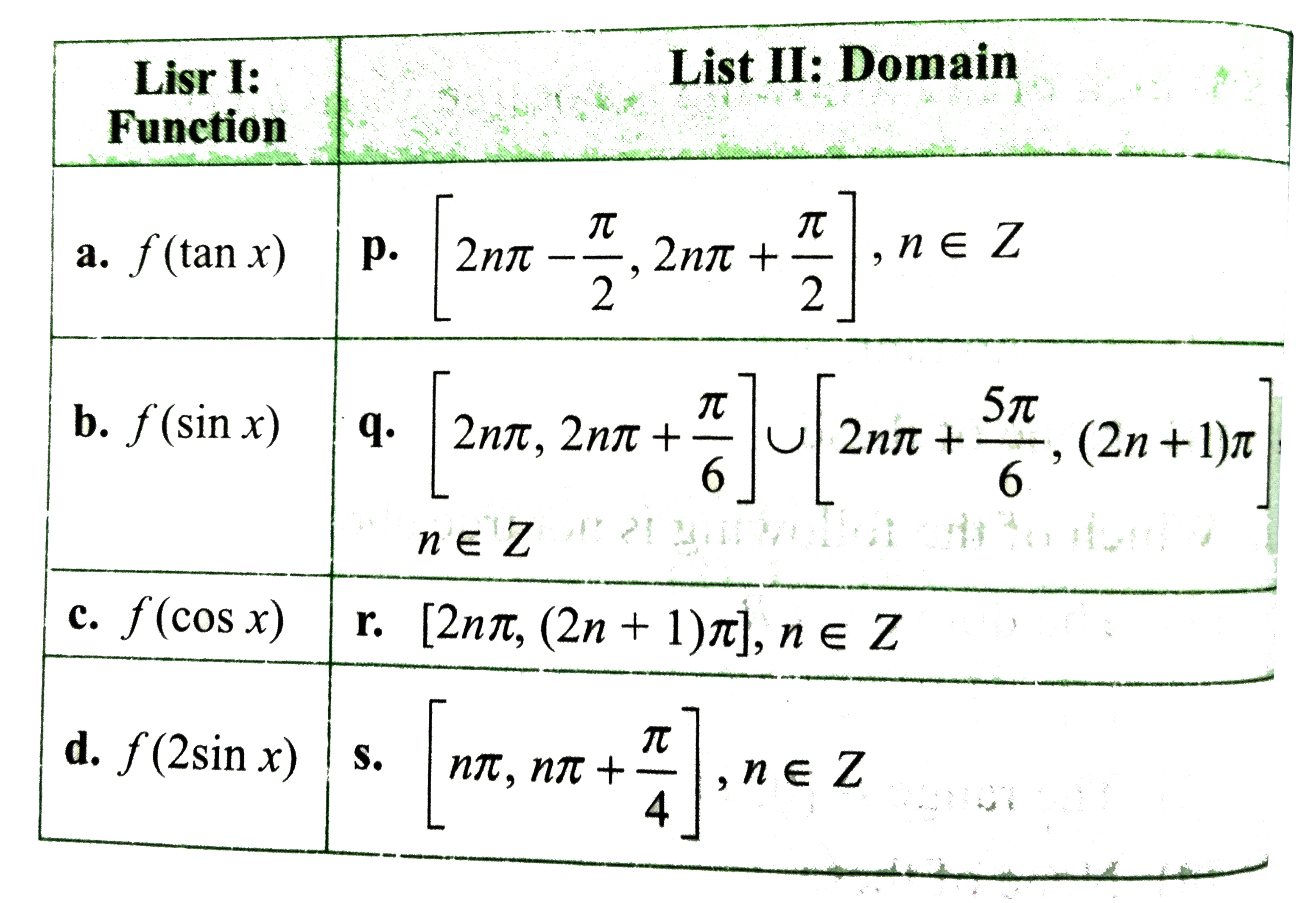The number of integers in the domain of function, satisfying f(x)+f(x−1)=x3+1x,is___Solution in Tamil
The correct Answer is:2
f(x)+f(1x)=x2+1x
Replacing x by 1x, we get f(1x)+f(x)=1x2+x
or1x2+x=x2+1x
orx−1x=x2−1x2
or(x−1x)=(x−1x)(x+1x)
or(x−1x)(x+1x−1)=0
x=1x,x+1x=1(rejected)
Hence, x=1or−1.
Topper's Solved these Questions
- BOOK - CENGAGECHAPTER - RELATIONS AND FUNCTIONSEXERCISE - JEE Previous Year12videos
RELATIONS AND FUNCTIONS
- BOOK - CENGAGECHAPTER - RELATIONS AND FUNCTIONSEXERCISE - Exercise (Matrix)9videos
RELATIONS AND FUNCTIONS
- BOOK - CENGAGECHAPTER - Quadratic Equations, Inequalities, Modulus and LogarithmsEXERCISE - Question Bank28videos
Quadratic Equations, Inequalities, Modulus and Logarithms
- BOOK - CENGAGECHAPTER - SCALER TRIPLE PRODUCTS EXERCISE - DPP 2.311videos
SCALER TRIPLE PRODUCTS
Similar Questions
For real x, let f(x)=x3+5x+1 , then (1) f is oneone but not onto R (2) f is onto R but not oneone (3) f is oneone and onto R (4) f is neither oneone nor onto R
02:19View SolutionThe function f(x) is defined on the interval [0, 1]. Now, match the following lists:
 01:43View Solution
01:43View SolutionLet a,b,c,d be positive integers such that (log)ab=32and(log)cd=54. If (a−c)=9, then find the value of (b−d).
01:40View SolutionNumber of integral value(s) of λ for which vectors x2ˆi−ˆj+xˆk,(λ−1)ˆi−2λˆj+ˆk and ˆi−ˆj+ˆk, in the order from right-handed system ∀x ∈R, is
10:13View SolutionThe number of integers in the domain of function, satisfying f(x)+f(x−1)=x3+1x,is___
03:07View SolutionThe function y=f(x) satisfying the condition f(x+(1)/(x))=x^(3)+(1)/(x^(3)) is
02:48View Solutionf(x)=sin−1[2x2−3], where [⋅] denotes the greatest integer function. Find the domain of f(x).
03:40View Solutionf(x)=cos−1{log[√x3+1]}, find the domain and range of f(x) (where [ * ] denotes the greatest integer function).
03:49View SolutionIf a function satisfies the condition f(x+1/x)=x^(2)+1/(x^(2)),xne0 , then domain of f(x) is
03:01View SolutionIf f (x) is a polynomial function satisfying f(x).f(1x)=f(x)+f(1x) and f(4) =257 then f(3) =
00:56View SolutionThe number of integers in the domain of function, satisfying f(x)+f(x−1)=x3+1x,is (a) empty set (b) singleton set (c) Finite Set (d) An infinite set
View SolutionThe number of integers in the domain of function, satisfying f(x)+f(x−1)=x3+1x,is___
03:38View SolutionThe function y=f(x) satisfying the condition f(x+1/x)=x3+1/x3 is:
03:03View SolutionThe domain of the function f(x)=1x−1 is…….
03:45View SolutionThe number of integers in the domain of functions , satisfying f(x)+f(x−1)=x2+1x , is……………..
04:56View Solution

